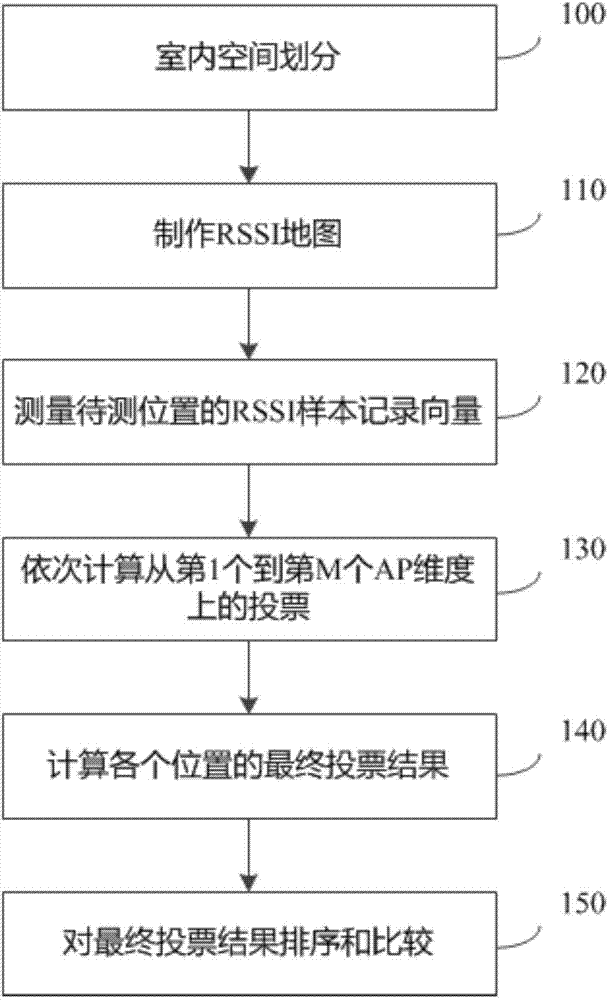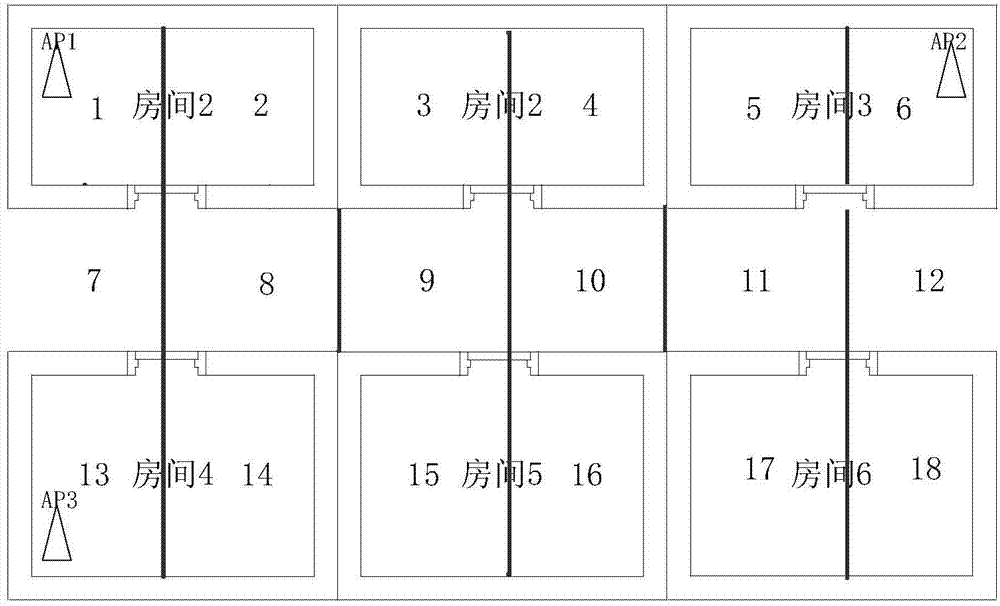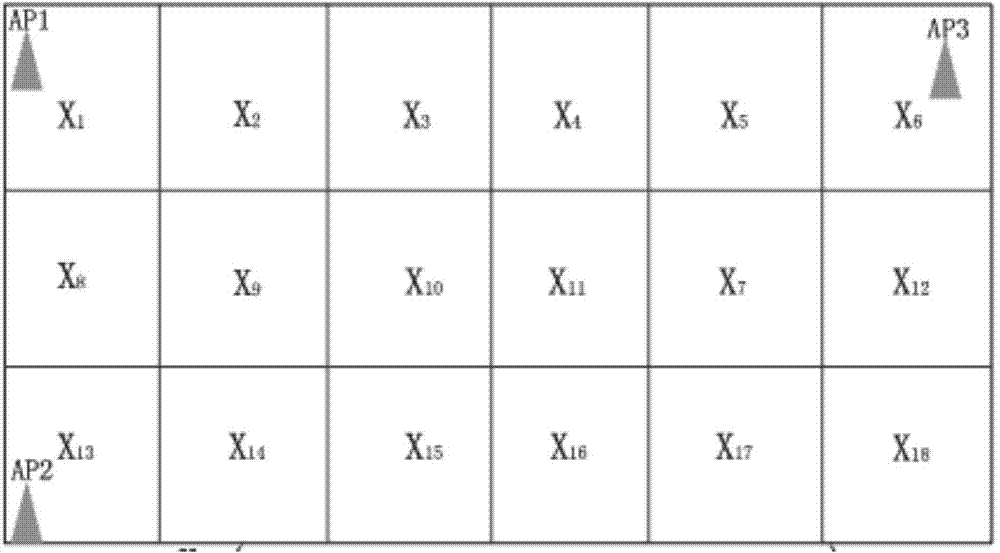Indoor positioning method and device based on signal intensity probability
A signal strength and indoor positioning technology, applied in wireless communication, wireless communication services, electrical components, etc., can solve problems such as large positioning error, failure to achieve indoor positioning, and easy interference of signals
- Summary
- Abstract
- Description
- Claims
- Application Information
AI Technical Summary
Problems solved by technology
Method used
Image
Examples
Embodiment 1
[0029] see Figure 1-3 , discloses an indoor positioning method based on signal strength probability according to a specific embodiment of the present invention, comprising the following steps:
[0030]Step 100, divide the indoor space into T spaces according to the distribution structure of the indoor environment and the access points AP, where T is a positive integer.
[0031] Such as figure 2 as shown, figure 2 An exemplary division of indoor space is shown. In this example, the indoor space is divided into 18 spaces according to the placement method and environment of the access point (AP, Access Point). Furthermore, in practical applications, the size of each space can also be determined according to the AP placement method and environment.
[0032] Step 110: Use the Fingerprint Map algorithm to make RSSI (Received Signal Strength Indication) maps of T spaces, where the RSSI sample record vector form of the i-th position is as follows:
[0033] ...
Embodiment 2
[0077] In this embodiment, a specific example of data obtained by positioning is introduced in the present invention.
[0078] see Figure 4 , is a floor plan of a room. In this aspect, it includes conference rooms, multiple small office areas, experimental areas and (large) office areas. First, the room is divided into 8 planar spaces with 3 access points .
[0079] The test steps are as follows:
[0080] 1. In 8 unit spaces, collect 100 RSSI values in the four directions of east, west, north and south, and then calculate the mean value in each direction as the measurement data for each time. 2. Calculate the mean, variance, maximum and minimum of 100 measurement data in each unit space. 3. Make RSSI offline map. 4. According to the method of step 1, collect the data of the unknown location. 5. Match offline maps to determine unknown locations.
[0081] Specifically, taking the first unit space as an example, the RSSI values in the four directions of the first set o...
Embodiment 3
[0096] Furthermore, it is an example of the indoor positioning device based on the signal strength probability of the present invention. Includes the following units:
[0097] The indoor space division unit 200 divides the indoor space into T spaces according to the distribution structure and access points of the indoor environment, where T is a positive integer;
[0098] The RSSI map making unit 210 utilizes the Fingerprint M access point algorithm to make RSSI maps of T spaces, wherein the RSSI sample record vector form of the i-th position is as follows:
[0099] S i = μ i , 1 , σ i , 1 ...
PUM
 Login to View More
Login to View More Abstract
Description
Claims
Application Information
 Login to View More
Login to View More - R&D
- Intellectual Property
- Life Sciences
- Materials
- Tech Scout
- Unparalleled Data Quality
- Higher Quality Content
- 60% Fewer Hallucinations
Browse by: Latest US Patents, China's latest patents, Technical Efficacy Thesaurus, Application Domain, Technology Topic, Popular Technical Reports.
© 2025 PatSnap. All rights reserved.Legal|Privacy policy|Modern Slavery Act Transparency Statement|Sitemap|About US| Contact US: help@patsnap.com



